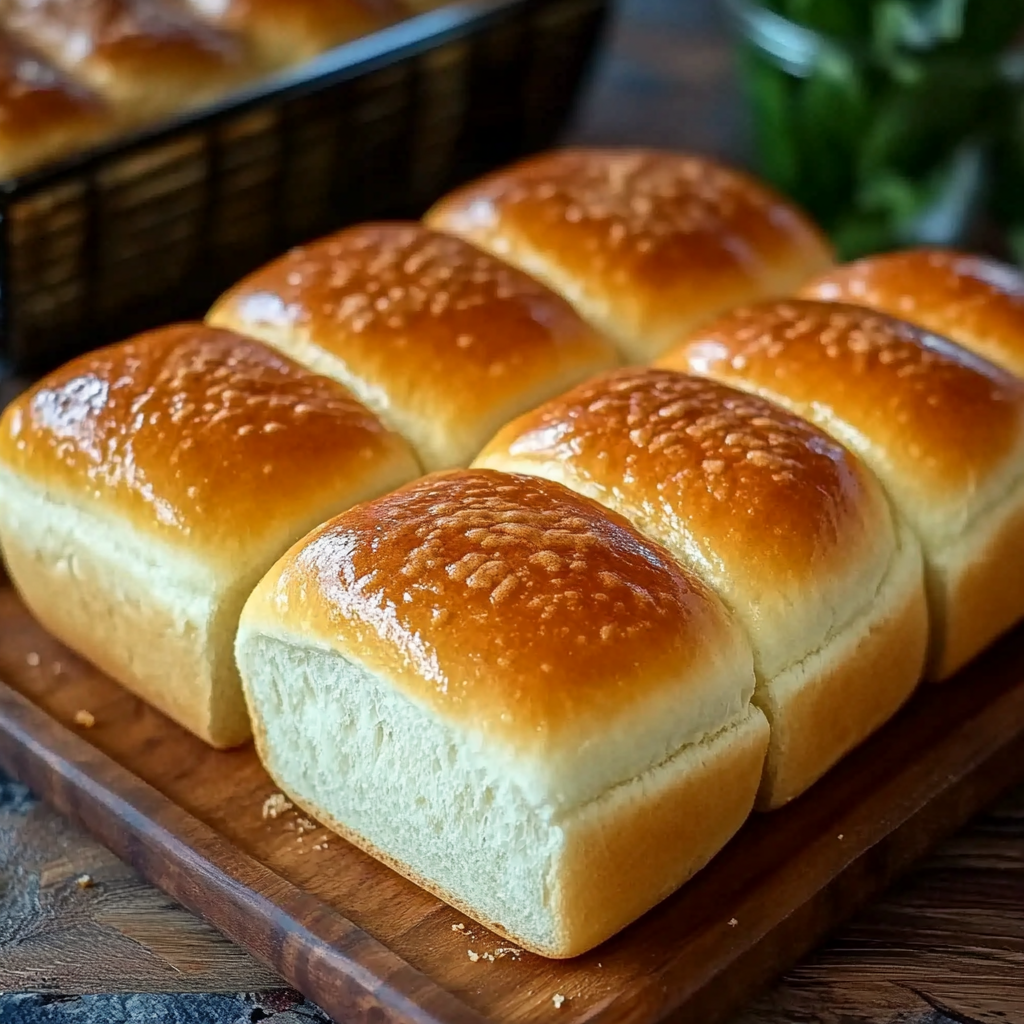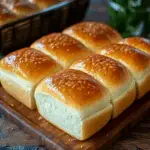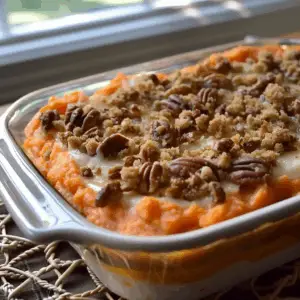Soft Milk Bread
There’s something undeniably comforting about biting into a slice of soft milk bread. With its fluffy texture and subtly sweet flavor, this beloved loaf has captured the hearts of home bakers worldwide. Often called Hokkaido milk bread, this style of bread is especially popular across East Asia, but its appeal extends globally thanks to its pillowy softness and versatility.
Unlike typical white bread, milk bread is enriched with ingredients like milk, heavy cream, egg, and butter, creating a rich, moist interior and a slightly chewy crust. Its structure comes from the use of bread flour, which has a higher protein content than all-purpose flour, allowing for better gluten development. Gluten plays a crucial role in giving this bread its signature stretch and strength — learn more about how gluten functions in baking.
What makes this recipe special is that it’s easy enough for beginners yet yields a professional-quality result. Whether you’re looking to bake something new or you’ve tried and failed to achieve that perfect airy texture before, this method makes it accessible. Incorporating yeast in baking the right way, along with a balanced combination of ingredients, is key to achieving the soft crumb that defines true milk bread.
Beyond its comforting taste and texture, soft milk bread is incredibly versatile. You can use it for sandwiches, serve it with soup, or even turn it into French toast. For baking inspiration, many home bakers turn to platforms like Pinterest, where variations like condensed milk bread and milk bread rolls showcase the creative possibilities of this dough.
By mastering the steps in this article, you’ll be equipped to bake your own loaf of soft milk bread that stays tender for days, toasts beautifully, and satisfies every craving. The recipe you’ll follow combines traditional methods with simple ingredients, making it easy to recreate bakery-style results at home. Let’s dive into what makes this loaf truly one-of-a-kind.
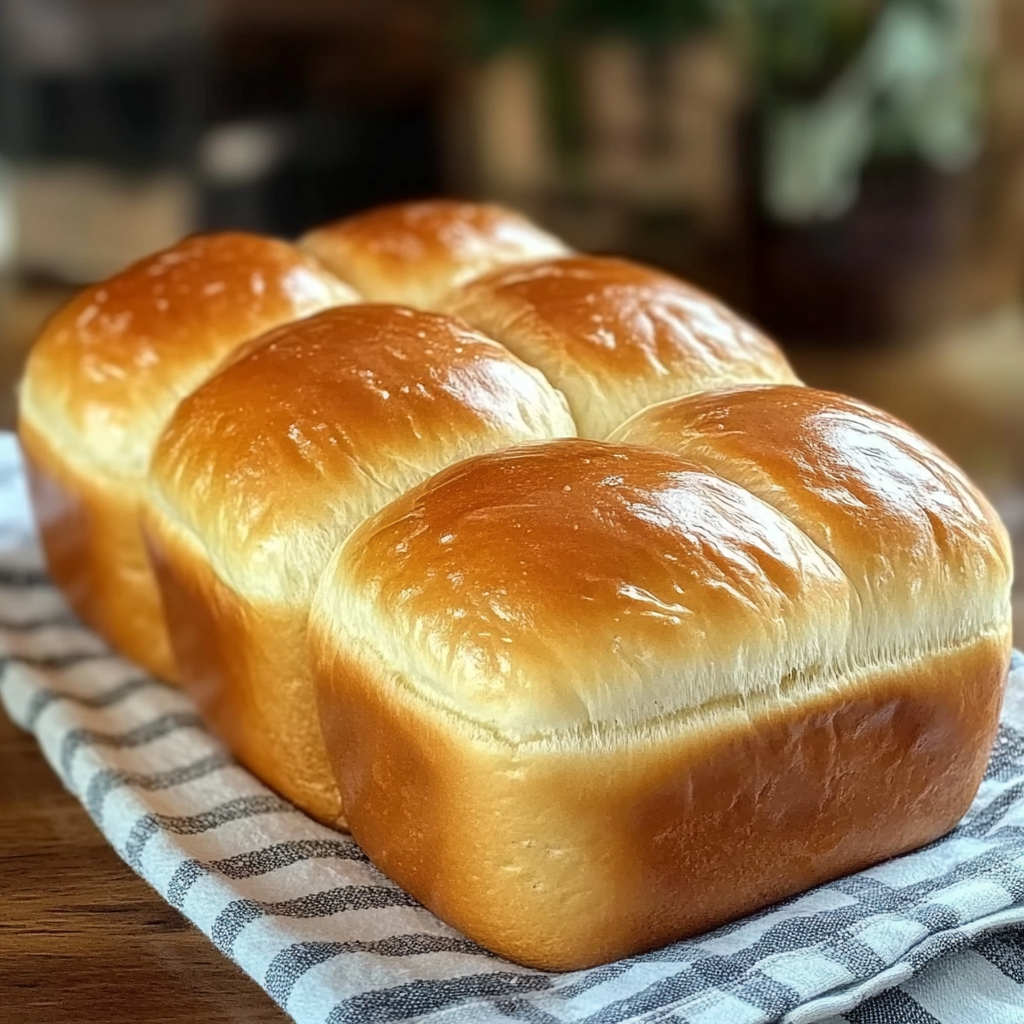
What Makes Milk Bread Different from Other Breads
Soft milk bread stands apart from standard loaves due to its enriched dough and unique texture. While traditional white bread uses water and minimal fat, milk bread incorporates milk, heavy cream, egg, and butter. These elements contribute to its tender crumb, golden crust, and subtle sweetness.
One of the defining features of milk bread is its velvety, cloud-like softness. This comes from the high fat and moisture content, which keeps the bread from drying out quickly. The presence of bread flour instead of all-purpose flour also plays a role. Bread flour has a higher protein content, which allows for better gluten development, providing structure while maintaining tenderness. For a deeper understanding, check out the basics of bread dough and how proteins interact during mixing and baking.
Unlike brioche, which is also an enriched dough, milk bread uses less butter and sugar. This makes it lighter and less sweet, which enhances its versatility. It works just as well for savory sandwiches as it does for sweet spreads like honey or jam. Brioche, by contrast, is often considered a pastry due to its richness.
Another key difference is the texture of the crust. Milk bread typically has a thin, soft crust, as opposed to the thicker, chewier crusts found on European-style breads like sourdough. The use of dairy in the dough promotes even browning, thanks to the Maillard reaction, giving the bread a golden hue without becoming overly crisp.
Many recipes also include a tangzhong or water roux, a pre-cooked mixture of flour and water or milk that boosts the bread’s moisture retention. This Japanese technique results in extra-soft bread that stays fresh longer, and is commonly featured in condensed milk bread loaf recipes.
Milk bread’s subtle sweetness and tender crumb make it ideal for a variety of uses. From toast to tea sandwiches, it adapts beautifully to your needs. It’s no wonder bakers around the world turn to this style of bread for its consistent results and satisfying texture.
Key Ingredients and Their Role
Every component of soft milk bread plays a vital role in achieving its signature texture and flavor. Understanding how each ingredient functions helps bakers customize or troubleshoot their dough while maintaining the bread’s light, fluffy consistency.
-
Bread Flour
Unlike all-purpose flour, bread flour contains more protein, which leads to better gluten development. Gluten provides the dough with structure and elasticity, which is crucial for a pillowy loaf. This structure allows the bread to trap gas produced by yeast fermentation, resulting in a beautifully risen crumb. -
Sugar
A modest amount of sugar not only enhances flavor but also feeds the yeast, supporting fermentation and improving browning during baking. The sugar content in milk bread is lower than in brioche, which keeps the taste subtly sweet without being overwhelming. -
Salt
Often underestimated, salt controls yeast activity and strengthens gluten. It also balances the sweetness of the sugar and dairy, making the final product taste more rounded and complex. -
Instant Yeast
Instant yeast eliminates the need for proofing, making it convenient and consistent. It’s designed to be mixed directly into the dry ingredients, speeding up the fermentation process without sacrificing flavor. Learn more about yeast in baking and how it affects rise, taste, and crumb. -
Warm Milk
Milk softens the crumb and enriches the flavor. It contains both fat and sugar (lactose), which aid in browning and tenderness. The milk should be warmed (but not hot) to activate the yeast effectively without killing it. -
Heavy Cream
Heavy cream adds richness, fat, and moisture, elevating the bread’s texture to an ultra-soft level. Its higher fat content compared to milk gives the loaf a luxurious, melt-in-the-mouth feel. -
Egg
Eggs provide structure, color, and additional moisture. The proteins help firm up the dough during baking, while the fats contribute to softness. Eggs also help with leavening by trapping air when beaten into the dough. -
Unsalted Butter
Butter is added after initial kneading so it doesn’t interfere with gluten formation. It coats gluten strands, keeping them short and soft, which enhances the bread’s delicate texture. To better understand how butter influences baking, see this overview of butter’s role in doughs.
Substitute Suggestions and Variations
For those with dietary restrictions or limited ingredients, here are some suitable swaps:
-
Milk: Substitute with oat, soy, or almond milk (unsweetened) for a dairy-free version.
-
Heavy Cream: Use full-fat coconut milk or a vegan cream alternative.
-
Egg: Replace with a flax egg (1 tbsp ground flax + 3 tbsp water) for a vegan option.
-
Butter: Use plant-based butter or margarine for a dairy-free recipe.
You’ll find creative variations and presentation ideas on platforms like Pinterest, where bakers experiment with shapes, fillings, and flavors. This flexibility is part of what makes milk bread a favorite in kitchens worldwide.
The Science Behind Soft and Fluffy Bread
The magic of soft milk bread lies not just in its ingredients, but in the science of dough formation and fermentation. Each step in the process is carefully designed to develop a texture that’s light, moist, and cloud-like.
1. Gluten Development
Kneading builds gluten, the network of proteins that traps carbon dioxide released by the yeast. This allows the dough to expand and hold its shape. The elasticity and stretchiness of bread dough — explained here — is essential for creating the airy interior of milk bread.
2. Fat and Dairy Integration
Adding butter, milk, and heavy cream introduces fats and emulsifiers that coat the gluten strands. This interrupts long gluten chains, softening the dough and resulting in a tender, fluffy texture. The combination of moisture and fat prevents the bread from drying out quickly, keeping it moist for days.
3. Fermentation
Yeast fermentation is vital for flavor and rise. The yeast consumes sugars and releases carbon dioxide, creating air pockets within the dough. This gives milk bread its height and pillowy interior. Controlling proofing time is essential — under-proofed dough is dense, while over-proofed dough can collapse.
4. Heat and Browning
The presence of lactose from milk and sugar triggers the Maillard reaction, responsible for that beautiful golden-brown crust. The result is a soft crust that’s thin and flavorful, unlike the thick, chewy crusts of artisan breads. Learn how fermentation enhances flavor and texture in enriched doughs.
5. Tangzhong Technique (Optional)
Some variations use a pre-cooked roux of flour and milk known as tangzhong. This gelatinized mixture helps the dough retain moisture, resulting in an even softer and longer-lasting loaf. You can find many examples of this technique in condensed milk bread ideas.
Understanding these principles equips you to adjust your baking method for consistently soft, fluffy results — every time.
Step-by-Step: How to Make Soft Milk Bread
Follow this straightforward process to bake a moist, fluffy milk bread that rivals your favorite bakery.
1. Prepare the Dough
-
In a large bowl, combine:
-
2 ½ cups bread flour
-
3 tbsp sugar
-
1 tsp salt
-
2 tsp instant yeast
-
-
Add the wet ingredients:
-
½ cup warm milk
-
¼ cup heavy cream
-
1 large egg
-
Mix until a rough dough forms. If you’re new to bread baking, this guide on dough basics can be helpful.
2. Knead the Dough
-
Knead by hand for 8–10 minutes or use a stand mixer.
-
Add 2 tbsp softened butter and knead until fully incorporated and the dough becomes smooth, elastic, and slightly tacky.
3. First Proof
-
Place the dough in a lightly greased bowl.
-
Cover and let rise in a warm place until doubled (about 1 to 1.5 hours).
-
The dough should spring back slowly when pressed.
4. Shape and Second Proof
-
Punch down the dough and divide into 3–4 equal portions.
-
Shape each into a ball or log.
-
Place them into a greased loaf pan or baking dish.
-
Cover and let rise again until nearly doubled (30–45 minutes).
Discover more shaping styles and presentation ideas via this milk bread inspiration board.
5. Bake the Bread
-
Preheat oven to 350°F (175°C).
-
Bake for 25–30 minutes or until the top is golden and the loaf sounds hollow when tapped.
6. Cool and Slice
-
Remove from pan and cool completely on a wire rack before slicing.
-
For best results, use a serrated knife.
This process creates a soft, flavorful bread perfect for toast, sandwiches, or enjoying plain.
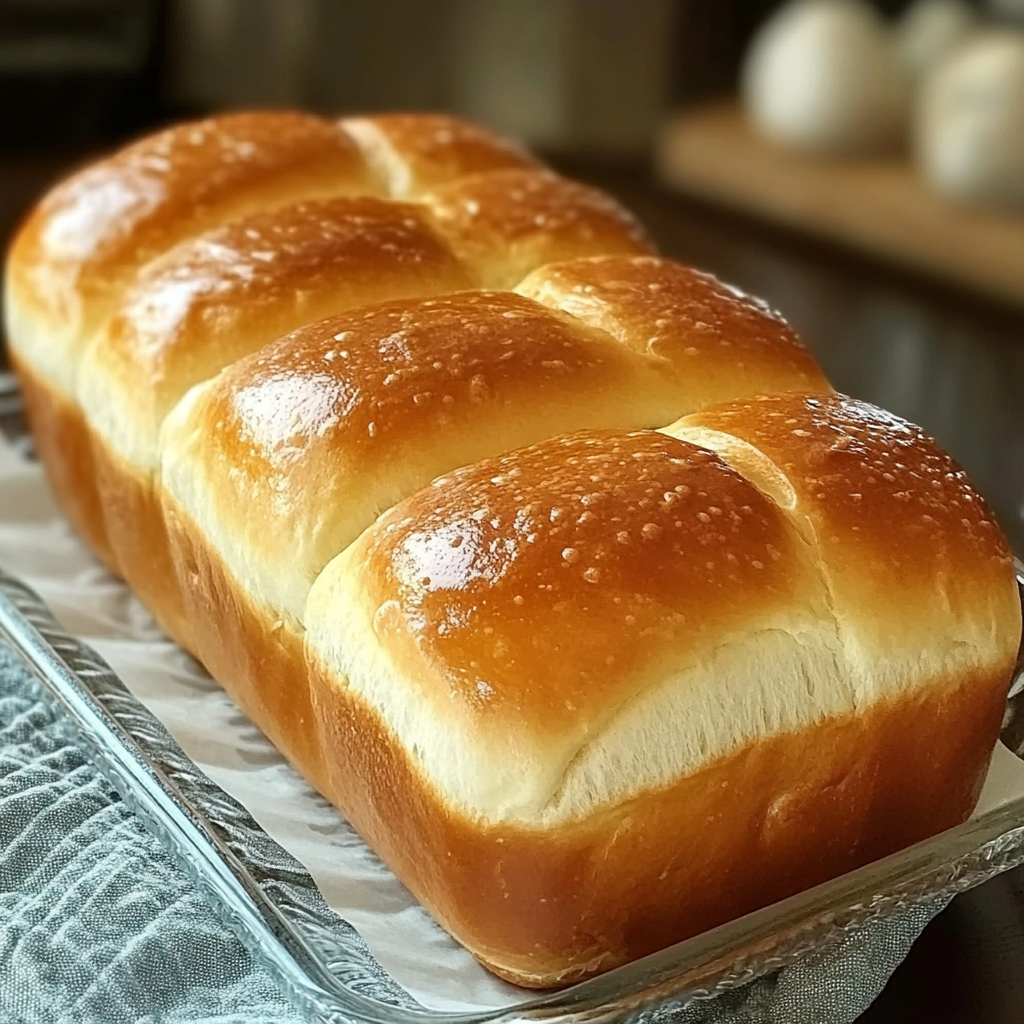
Tools You’ll Need (Optional Equipment)
To make the process smooth and efficient, these tools are recommended:
-
Mixing bowls
-
Stand mixer with dough hook (optional)
-
Loaf pan or baking dish
-
Kitchen scale for measuring flour
-
Bench scraper for shaping dough
-
Thermometer (optional for checking milk temperature)
These tools help ensure accuracy and consistency — especially useful if you’re new to home bread baking.
Common Variations of Milk Bread
There are numerous ways to personalize your milk bread:
-
Tangzhong Method: Incorporate a cooked flour-water paste to retain moisture. Great for extra fluffiness and longer shelf life.
-
Condensed Milk Bread: Replace some of the sugar and milk with condensed milk for a sweeter loaf. See ideas here.
-
Filled Breads: Add fillings like red bean paste, Nutella, or custard before rolling and baking.
-
Milk Bread Rolls: Shape the dough into buns or knots instead of a loaf. Explore milk bread rolls for inspiration.
-
Vegan Version: Use dairy-free milk, cream, and a flax egg. Substitute butter with vegan spread.
Each variation highlights the flexibility of this dough, allowing you to adapt it to different tastes and dietary needs.
Troubleshooting and Baking Tips
Even experienced bakers occasionally run into issues. Here’s how to troubleshoot:
-
Dough not rising?
-
Ensure your yeast is fresh.
-
Warm your milk to about 100°F (37°C) — not too hot or cold.
-
Let the dough rise in a warm, draft-free space.
-
-
Bread too dense?
-
Under-kneading or poor gluten development is often the cause.
-
Allow full proofing — it should double in size before baking.
-
-
Crust too hard or dark?
-
Check oven temperature with an oven thermometer.
-
Tent the top with foil halfway through baking if it browns too quickly.
-
-
Overproofed dough?
-
Don’t let dough rise too long during the second proof — it should look puffy but still springy.
-
-
Shaping issues?
-
Use a lightly floured surface and don’t over-handle the dough.
-
Still unsure? The role of yeast and fermentation is central to success in soft, enriched doughs — understanding those principles helps you avoid most problems.
Serving and Storing Ideas
Soft milk bread is incredibly versatile:
-
Serving Suggestions:
-
Toasted with butter or jam.
-
As a sandwich base — great for egg, tuna, or veggie fillings.
-
French toast or bread pudding.
-
-
Storage Tips:
-
Store at room temperature in an airtight bag for up to 3 days.
-
Refrigeration is not recommended as it dries out the bread.
-
For longer storage, slice and freeze in zip-top bags.
-
To reheat, microwave slices briefly or toast for a warm, fluffy bite.
Soft Milk Bread Recipe for Beginners
This recipe is perfect for first-time bread bakers:
-
Minimal Equipment: No stand mixer required.
-
Simple Ingredients: All are pantry staples or easy to find.
-
Fail-Safe Instructions: Clear timing and visual cues help avoid mistakes.
You can even use a bread machine by adding the wet ingredients first, followed by dry, and selecting the dough or white bread setting. For extra inspiration, see beginner-friendly boards like this soft milk bread recipe pin.
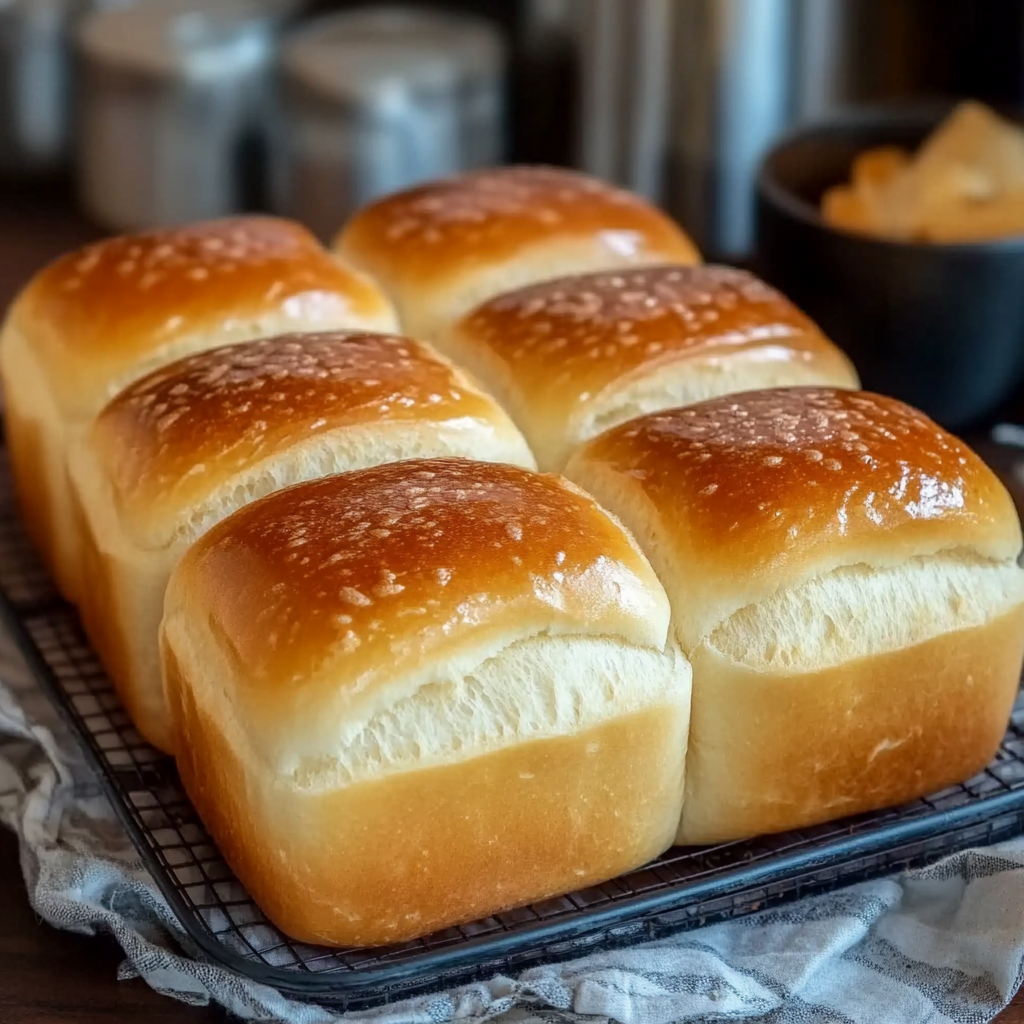
FAQs – Answering People Also Ask
What makes bread soft and fluffy?
The combination of gluten development, adequate proofing, and added fats (like butter and cream) contribute to a soft, airy texture. Kneading builds strength, and fats soften the gluten strands.
Can I make milk bread without heavy cream?
Yes, substitute heavy cream with whole milk or full-fat coconut milk. The bread may be slightly less rich but still soft and delicious.
Is milk bread the same as brioche?
No. Brioche is richer, with more butter and eggs, giving it a pastry-like feel. Milk bread is lighter and more versatile, ideal for both sweet and savory applications.
How long does homemade milk bread last?
It stays fresh at room temperature for 2–3 days. To extend shelf life, freeze sliced bread in an airtight bag.
Why is my milk bread not rising?
Possible reasons include expired yeast, cold liquid ingredients, or a chilly proofing environment. Ensure your yeast is active and your milk is warm (not hot).
Fluffy and Moist: Mastering the Soft Milk Bread Recipe
This soft milk bread recipe creates a beautifully golden loaf with a rich, tender crumb that stays moist for days. Using a blend of bread flour, milk, cream, egg, and butter, the dough bakes into a pillowy loaf that’s perfect for toasting, sandwiches, or enjoying on its own. With detailed instructions and simple ingredients, this beginner-friendly recipe ensures consistent, bakery-style results every time.
- Author: Clara
Ingredients
- 2 ½ cups bread flour
- 3 tbsp sugar
- 1 tsp salt
- 2 tsp instant yeast
- ½ cup warm milk
- ¼ cup heavy cream
- 1 large egg
- 2 tbsp unsalted butter, softened
Instructions
In a large mixing bowl, combine the bread flour, sugar, salt, and instant yeast.
Add warm milk, heavy cream, and egg. Mix until a rough dough forms.
Knead the dough until it becomes smooth and elastic, about 8–10 minutes.
Add softened butter and continue kneading until fully incorporated and the dough is smooth and stretchy.
Place the dough in a lightly greased bowl, cover, and let it rise in a warm place until doubled in size (about 1 to 1.5 hours).
Punch down the dough and divide it into equal portions. Shape each piece into a ball or roll as desired.
Place shaped dough into a greased loaf pan or baking dish. Cover and let it rise again until nearly doubled.
Preheat oven to 350°F (175°C). Bake for 25–30 minutes, or until golden brown and the bread sounds hollow when tapped.
Remove from the oven and cool on a wire rack before slicing.
Notes
-
Use bread flour for the best texture.
-
Warm the milk slightly to activate the yeast — avoid overheating.
-
Knead well until the dough becomes smooth and elastic.
-
Incorporate butter only after gluten has developed.
-
Don’t rush the proofing steps — they’re crucial for a soft, fluffy rise.
-
For extra softness, consider using the tangzhong method in future batches
